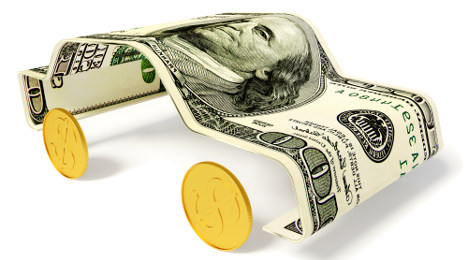Resolvion and American Lending Solutions (ALS) completed a merger agreement this week that will combine their respective operations into one of the largest skip-tracing and repossession management firms in the industry.
Executives indicated the new company will operate under the name ALS Resolvion.
The combined company will maintain its operations centers in Charlotte, N.C., Atlanta and Shelton, Conn. The senior management teams from both operations will remain with the combined company under long-term contract in the following roles:
— Michael Levison as chief executive officer
— Jose Mendiola as president of consumer asset recovery
— Doug Melson as president of commercial asset recovery
— Martin Chapman as chief operating officer
— Keith Yarnell as chief technology officer and chief compliance officer
— Charles Goldsmith as chief financial officer
“The merger of ALS and Resolvion creates a new industry powerhouse,” Levison said “ALS’ strong position in the forwarding and pre-charge off loss mitigation space helps us create a powerful ‘end-to-end’ solution for lenders looking for superior results while, at the same time, maintaining the highest level of compliance.”
Based on current operations, the combined business will employ approximately 150 people and handle in excess of 14,000 new assignments each month. Executives highlighted that the current client base includes 21 of the top 50 auto finance companies in the nation.
“My partners and I could not be more thrilled about this merger,” Mendiola said. “We have worked very hard for the past several years to build ALS into a significant industry player.
“The merger with Resolvion will deepen our ability to meet the full range of our client’s needs,” Mendiola went on to say.
Mendiola will be one of the many industry leaders who will be a part of this year’s Re3 Conference, the segment of Used Car Week dedicated to the repossession, recovery and remarketing of vehicles. The Re3 Conference is set for Nov. 12 at the Red Rock Casino, Resort and Spa in Las Vegas.
Mendiola will be joined in a conversation led by Agero vice president of business development Cort DeHart about how the forwarding model has changed since finance companies began to leverage these service providers to streamline each step of the recovery process.
Also on tap to be a part of that Re3 Conference session are:
— Claudia Plascencia, senior vice president, Del Mar Recovery Solutions
— Monte Sernel, general manager, United Auto Recovery
— Chuck Tapp, chief executive officer, Primeritus Financial Services
In the meantime, for finance companies looking to do business with this new entity — ALS Resolvion — they can contact Levison at (678) 702-5101 or [email protected] as well as Mendiola at (954) 931-2848 or [email protected].
The latest delinquency data from Experian Automotive might give more fuel to observers who believe subprime auto financing is creating a bubble similar to the one that popped in the mortgage industry and sent the economy into a tailspin more than five years ago.
However, an Ivy League economic expert refuted the parallel between auto loans and mortgages, rather pointing to the potential turbulence associated with financing growth that the chairman of the Federal Reserve also mentioned this week in comments ahead of the Federal Open Market Committee’s annual gathering.
First, here are the latest delinquency numbers from Experian.
According to its latest State of the Automotive Finance Market report, Experian indicated 60-day loan delinquencies increased by 7 percent to 0.62 percent in the second quarter of this year from 0.58 percent during the same quarter a year ago. Despite the rise, Experian pointed out the rate still is near historic lows.
Additionally, 30-day delinquencies showed a slight increase, going from 2.38 percent to 2.39 percent over the same time period. Moreover, Experian determined the total balance of loans that are 60-days delinquent has increased by $859 million since Q2 2013, while the balance of 30-day delinquent loans has increased by $2.8 billion from a year earlier.
“The rosy glow of perfect payment performance in the automotive space is beginning to tarnish,” said Melinda Zabritski, senior director of automotive finance for Experian Automotive who will kick off the SubPrime Forum with the opening keynote presentation on Nov. 11.
“We’re starting to see a slight uptick in the number of consumers struggling to make their automotive payments on time,” Zabritski continued. “However, we have to keep in mind that these percentages are still extremely low. We’ll want to keep an eye on how consumers pay their bills in the coming months, as it may dictate the availability of credit in the future.”
Experian also shared two other negative trends from its Q2 data, including:
• The overall automotive repossession rate saw a significant increase in the second quarter of 2014, jumping more than 70 percent to 0.62 percent from a year earlier.
• The average charge-off amount in Q2 was $8,149, up $932 from the previous year.
Trends like those points have fueled multiple industry commentaries about how subprime auto financing is heading down the same path of mortgages. But Jack Guttentag, professor of finance emeritus at the Wharton School of the University of Pennsylvania, dedicated an entire commentary on his website, The Mortgage Professor, to echo similar stances that finance company executives also shared in this previous report from SubPrime Auto Finance News.
“The role of collateral is very different in the market for subprime loans on used cars than in the home-loan market,” Guttentag said. “It is common for the car purchaser to owe more than the car is worth, but that does not weaken the incentive to pay because the borrower needs the car. The importance of the collateral to the lender is mainly the power to take the car away from the borrower, and only secondarily is it viewed as the means to recover some of the unpaid balance of a loan in default.
“We worry about bubbles because of the implied vulnerability to a shock, but none of the parallels to the subprime mortgage market indicate that the subprime auto market is in a bubble,” he continued. “The type of shock to which this sector is exposed is not the bursting of a bubble, but a major rise in unemployment that cuts the incomes of borrowers. At this point, no such shocks are on the horizon.”
While Guttentag doesn’t expect unemployment to spike like it did five years ago when the recession gained negative momentum. Federal Reserve chairman Janet Yellen explained how much time and growth it has taken for the labor market to recuperate. She shared the latest data in prepared remarks as Fed leaders gathered for their special annual meeting in Jackson Hole, Wyo.
Yellen noted job gains in 2014 have averaged 230,000 a month, up from the 190,000 jobs monthly during the previous two years. She also mentioned the unemployment rate, at 6.2 percent in July, has declined nearly 4 percentage points from its late 2009 peak.
“In the five years since the end of the Great Recession, the economy has made considerable progress in recovering from the largest and most sustained loss of employment in the United States since the Great Depression,” Yellen said. “More jobs have now been created in the recovery than were lost in the downturn, with payroll employment in May of this year finally exceeding the previous peak in January 2008.
“Over the past year, the unemployment rate has fallen considerably, and at a surprisingly rapid pace. These developments are encouraging, but it speaks to the depth of the damage that, five years after the end of the recession, the labor market has yet to fully recover,” she went on to say.
The auto segment of the S&P/Experian Consumer Credit Default Indices stayed flat on a sequential basis in July.
And analysts from S&P Dow Jones Indices and Experian highlighted July’s auto reading settled only four basis points above its historical low. The auto default rate came in at 0.96 percent in July, the same as June. Last July, the rate stood at 1.03 percent.
The national composite rate — a comprehensive measure of changes in consumer credit defaults — remained at the lowest compared to more than 10 years of historical data. That composite rate was 1.01 percent in July, down one basis point from last month.
Extending a streak of nine consecutive months of declines, analysts noted the first mortgage default rate fell to 0.88 percent. S&P and Experian also mentioned the bank card default rate declined 16 basis points to 2.86 percent in July.
“Consumer credit default rates dipped slightly below last month’s rate,” said David Blitzer, managing director and chairman of the index committee for S&P Dow Jones Indices.
“At just above 1 percent, default rates remain at historical lows. Mortgage default rates have been trending down while auto and bank card are a bit higher than their historical lows set in April and March,” Blitzer continued.
“Driven by mortgages, household debt decreased in the second quarter of 2014,” he went on to say. “Non-housing debt rose slightly in the second quarter. In the latest Federal Reserve survey of lending standards, a small portion of banks reported some easing of standards while most banks reported no change.”
Looking at the five largest metropolitan areas analysts track monthly for this report, Los Angeles dropped to its lowest default rate of 0.66 percent in July. A year earlier, the rate stood at 1.56 percent.
Dallas saw its default rate decline by 7 basis points to settle at 0.80 percent. Blitzer noted that Big D is only a few basis points away from its historical low set in May.
Miami continues to maintain the highest default rate among this group at 1.51 percent.
“Chicago and Miami are at their lowest default rates since 2006,” Blitzer said. “All five cities — Chicago, Dallas, Los Angeles, Miami and New York — remain below default rates seen a year ago.”
Jointly developed by S&P Indices and Experian, Blitzer reiterated the S&P/Experian Consumer Credit Default Indices are published monthly with the intent to accurately track the default experience of consumer balances in four key loan categories: auto, bankcard, first mortgage lien and second mortgage lien.
The indices are calculated based on data extracted from Experian’s consumer credit database. This database is populated with individual consumer loan and payment data submitted by lenders to Experian every month.
Experian’s base of data contributors includes leading banks and mortgage companies and covers approximately $11 trillion in outstanding loans sourced from 11,500 lenders.
Roughly one out of 20 people with a credit file — which constitutes about 5.3 percent of the U.S. consumer population — are at least 30 days late on a credit card or other non-mortgage account such as an auto loan or a student loan.
And consumers within 13 states represented a majority of those past-due account holders, with Nevada leading the way at 47 percent of people with a credit file in that state having debt in reported collections.
The District of Columbia and an additional 12 states are above the 40-percent mark, including:
— Alabama
— Arkansas
— Florida
— Georgia
— Kentucky
— Louisiana
— Mississippi
— New Mexico
— North Carolina
— South Carolina
— Texas
— West Virginia
Urban Institute researchers collaborated with analysts from the Consumer Credit Research Institute to dissect TransUnion data to compile this report.
“While this is a minority of adults, debt past due is an indication of looming problems,” report authors said. “For adults with other debts already in collections, the problem may be snowballing.
“Among people with debt past due, the average amount they need to pay to become current on that debt is $2,258.80,” they continued.
Drilling down deeper into the data, the report delved into the debt standings within the 100 largest metropolitan areas. Study orchestrators found that five cities have at least 45 percent of people with collections debt reported in their credit files. That group included:
— McAllen, Texas: 51.7 percent
— Las Vegas: 49.2 percent
— Lakeland, Fla. 47.3 percent
— Columbia, S.C.: 45.2 percent
— Jacksonville, Fla.: 45.0 percent
On the opposite side of the debt spectrum, the report showed three Midwestern states — Minnesota, North Dakota, and South Dakota — have a substantially lower, yet still considerable levels, as 20 percent of people have reported debt in collections.
And large cities with consumers with the lowest amounts of debts in collections were spread out geographically, but none were located in the South. That group included:
— Minneapolis-St. Paul: 20.1 percent
— Honolulu: 21.0 percent
— Boston: 22.4 percent
— Madison, Wis.: 22.6 percent
— San Jose, Calif.: 23.0 percent
— Bridgeport, Conn.: 24.5 percent
Moody’s Analytics senior director Cristian deRitis chimed in this week, refuting the notion that rising auto lending volume is creating a bubble similar to the one that burst in the mortgage space and sent the U.S. economy into recession.
deRitis insisted that credit quality is better today than prior to the recession, or at any time since the American Bankers Association began tracking delinquency rates for auto loans in 1980.
“Borrowers of all credit profiles are taking out larger loans than they did in 2009,” deRitis wrote in a blog post on Moody’s website. “Improved consumer balance sheets and confidence offer one possible explanation. Consumers owe less now than they did during the recession, so they can afford to take on more debt. Another reason is supply: More lenders are more willing to provide credit than they were in 2009.”
The total amount outstanding in finance companies’ auto portfolios climbed above $900 billion earlier this year, according to Equifax. deRitis cited many other Equifax figures in his analysis, touching on the rise of contracts to subprime borrowers and acknowledging how that typically generates industry apprehension.
“The critics’ concerns notwithstanding, it is difficult to view the increased availability of credit as a negative,” deRitis said. “The steady availability of credit is a major reason for the auto industry’s growth over the past few years, while other sectors such as housing and retail sales have struggled.
“Nonetheless, if the Great Recession taught us anything, it is the danger of complacency,” he continued. “Just because consumers can afford to take on more debt does not mean they should. Today's record low delinquency rates can quickly accelerate.”
But again referencing Equifax data, deRitis pointed out payment performance has improved with each passing month since delinquency rates peaked in 2009.
“The fact that this is true across all stages of delinquency (30, 60, 90 and 120 days past due) is particularly encouraging,” he said.
The Moody’s analysts emphasized that instances of fraud and questionable financing practices that’s been highlighted in media reports this summer need to be addressed before they become systemic issues.
“Yet in some respects, auto lending is a victim of its own success,” deRitis said. “While auto credit contracted during the Great Recession, it was the first consumer credit sector to fully recover.
“Unlike private label mortgage-backed securities, the market for securities backed by auto loans did not collapse, continuing to function throughout the recession,” he continued. “Although significant, the losses suffered by auto finance companies and banks were tolerable and did not alter the shape of the financial system.”
deRitis reiterated the point made by dealers and finance companies to regulators — that access to reliable transportation is critical to securing and retaining employment to generate steady income.
“For some, the ability to purchase a vehicle meant the difference between keeping a job and unemployment,” deRitis said. “Tightening compliance and increased education are important to insure that borrowers are qualified and understand their loans, as is punishing unscrupulous dealers and lenders.
“But restricting credit too severely has its own consequences and will ultimately push consumers into the shadow banking system with little if any regulatory protection,” he continued.
“Without financing to support sales, the industry's recovery would have been far slower with more severe job losses,” deRitis went on to say. “The market may have overshot in the opposite direction recently, providing too liberally. But to borrow an automotive metaphor, it is easier to tap the brakes and correct imbalances than to try and move the industry out of a ditch with the parking brake of credit fully engaged.”
Based on a view the competitive pressure in the subprime finance space isn’t quite as intense, Consumer Portfolio Services watched its second-quarter earnings per diluted share spike by 47 percent year-over-year.
CPS reported that its Q2 earnings rose to $7.0 million, or $0.22 per diluted share, for the quarter that ended June 30. During the same span a year earlier, the company’s net income was $4.8 million, or $0.15 per diluted share.
Through the first half of the year, CPS also is posting a 47-percent jump in earnings. Through the six months of 2014, CPS generated $13.7 million, or $0.43 per diluted share, compared to earnings of $8.6 million, or $0.27 per diluted share at the halfway mark of 2013.
“We are pleased with our operating results for the second quarter of 2014,” CPS chairman and chief executive officer Brad Bradley said. “We increased our new contract purchases and managed portfolio, and achieved continued earnings growth.
“In addition, we hit a milestone in one of our corporate objectives by earning a triple-A rating on the senior class of notes in our 2014-B securitization, which contributed to an extremely low cost of funds on that transaction,” Bradley continued.
During a conference call with investment analysts, Bradley gave his usual candid assessment of how the subprime finance market is behaving and how CPS is navigating current conditions.
“We certainly are very happy where we sit within the industry,” Bradley said. “A lot of folks say how competitive it is. From our opinion, it would appear that a lot of the sort of the competition has eased a bit.
“Whether everybody’s just taking a step back for a variety of reasons, it's a little hard to tell. We think that the competitive environment eased some. We have a few ideas on why, but we’re don’t have anything definitive to point out,” he continued.
Without naming any specific institutions, Bradley speculated on what other finance company strategy might have been in recent quarters.
“We think there was a few companies out there, particularly large ones, maybe growing on purpose, maybe before an IPO or something, and so maybe they’ve slowed down,” he said. “Some of the larger guys probably have slowed down. The really big players, no one appears to be being overly aggressive in trying to seize market share.
“And the medium segment of players, there’s probably a few guys that might have gotten a little ahead of themselves, and so we see some sort of true backing off in sort of the mid-level,” Bradley continued. “And then at the lower level, you have a bunch of small companies who are trying to go in and grab market share. Maybe they finally have been getting a little bit burned and backed off some.”
So is the subprime surge over, contrary to what some analysts said in this report posted by SubPrime Auto Finance News last week?
“If you look at it on the whole, what you really have is it’s not like everybody's backing up like crazy, but it’s really nobody’s particularly pushing forward,” Bradley said. “And that has given us a little bit of a growth spurt in the middle of summer when we would never really have one at all.
“We’re not making huge predictions. But it is interesting that people overall have appeared to at least slowed down or aren’t pushing aggressively forward,” he went on to say.
More Details of Q2 Performance
As Bradley reference, CPS purchased $211.4 million of new contracts compared to $189.9 million during the first quarter of 2014 and $203.8 million during the second quarter of 2013.
The company’s managed receivables totaled $1.374 billion as of June 30, an increase from $1.295 billion as of March 31 and $1.067 billion as of June 30 of last year.
Looking at second-quarter revenue, CPS generated $71.6 million for an increase of $1.1 million, or 1.6 percent. Officials pointed out that revenues in Q2 of last year included $10.9 million from a gain on cancellation of debt.
Excluding that gain, the company calculated that revenues for the second quarter increased by $12.1 million, or 20.3 percent, year-over-year.
CPS’ total operating expenses for the second quarter settled at $59.3 million, a decrease of $2.7 million, or 4.3 percent compared to $61.9 million a year earlier.
However, in the second quarter of 2013, the company pointed out operating expenses included a provision for contingent liabilities of $9.7 million. Excluding the provision for contingent liabilities, operating expenses increased $7.0 million, or 13.3 percent.
Pretax income for the second quarter came in at $12.3 million compared to pretax income of $8.5 million in the second quarter of last year, an increase of 44.3 percent.
And finally in terms of the health of its portfolio, CPS indicated its annualized net charge-offs for the second quarter were 4.98 percent of the average owned portfolio as compared to 4.03 percent for the second quarter of 2013.
The company’s delinquencies greater than 30 days (including repossession inventory) stood at 6.21 percent of the total owned portfolio as of June 30, as compared to 5.16 percent as of the same date last year.
With sequential comparisons coming against default rates at or near historic lows, the auto loan portion of the S&P/Experian Consumer Credit Default Indices for June ticked slightly higher for the second month in a row.
The auto loan default reading for June came in at 0.96 percent, up from 0.93 percent a month earlier. June’s level still marked an improvement from a year earlier when the default rate stood at 1 percent.
The slight auto loan uptick didn’t stop the national composite rate — a comprehensive measure of changes in consumer credit defaults — from dropping to the lowest point in more than 10 years. The composite rate ticked down to 1.02 percent in June. It stood at 1.34 percent in June of last year.
In other credit sectors, the first mortgage default rate continued its string of declines, dropping for the eighth month in a row to 0.89 percent. Meanwhile, the bank card default rate rose to 3.02 percent in June; its third consecutive increase from its historical low posted in March.
“Consumer credit default rates continue to drift lower and have reached a historical low,” said David Blitzer, managing director and chairman of the index committee for S&P Dow Jones Indices.
“Recent economic reports are encouraging with the unemployment rate now at a six-year low and strong job creation in recent months,” Blitzer continued.
“The continued declines in consumer default rates confirm other indicators of an improving economy,” he went on to say. “Credit standards for mortgage loans continue to be somewhat restrictive and may be contributing to low first mortgage default rates.”
Turning to the top five metropolitan areas the committee tracks for this report, defaults in Dallas moved slightly higher in June after establishing a historic low in May. Defaults in Big D came in at 0.87 percent in June, up from 0.77 percent in May.
Only one city had a lower default rate than Dallas. Los Angeles’ rate came in at 0.75 percent as the City of Angels joined Chicago, Miami and New York at recording their lowest default rates since the start of the last recession.
Miami’s rate still remains highest among these five places at 1.68 percent.
“All five cities — Chicago, Dallas, Los Angeles, Miami and New York — remain below default rates seen a year ago,” Blitzer said.
Jointly developed by S&P Indices and Experian, Blitzer reiterated the S&P/Experian Consumer Credit Default Indices are published monthly with the intent to accurately track the default experience of consumer balances in four key loan categories: auto, bankcard, first mortgage lien and second mortgage lien.
The indices are calculated based on data extracted from Experian’s consumer credit database. This database is populated with individual consumer loan and payment data submitted by lenders to Experian every month.
Experian’s base of data contributors includes leading banks and mortgage companies and covers approximately $11 trillion in outstanding loans sourced from 11,500 lenders.
The American Bankers Association’s Consumer Credit Delinquency Bulletin showed mixed movements of consumers maintaining payments on their vehicle loans during the first quarter.
Officials said that Q1 delinquencies associated with direct auto loans — financing arranged directly through a commercial bank — dipped year-over-year from 0.79 percent to 0.76 percent.
Meanwhile, ABA found that delinquencies connect with indirect auto loans — financing originated through a third party such as a dealer — ticked up year-over-year from 1.62 percent to 1.74 percent.
The mixed delinquency movements come as the Federal Reserve indicated commercial banks are raising their interest rates on vehicle financing.
The Fed indicated the average APR on a new-vehicle contract in May came in at 4.50 percent — the highest point since the first quarter of last year.
That commercial bank rate still has to climb higher to reach the points the Fed noticed immediately after the most recent recession. The Fed pointed out the new-vehicle APR average closed 2009 at 6.72 percent and 2010 at 6.21 percent.
Turning back to the ABA’s Delinquency Bulletin, catching the attention most of association chief economist James Chessen was bank card delinquencies declining significantly in the first quarter. Delinquencies for this credit product dropped 16 basis points to 2.44 percent of all accounts
Chessen noted that delinquencies for bank cards are well below their 15-year average of 3.82 percent as consumers continue to improve their financial situations.
This news comes after ABA’s Credit Card Market Monitor found that an increasing number of credit card users are using their cards as a transactional tool rather than as a form of debt.
“Bank card delinquencies remain at surprisingly low levels even as credit card spending increases,” Chessen said. “More and more consumers are using their credit cards as a payment vehicle, paying off or paying down their balances each month.”
Following two quarters of record lows, the composite ratio, which tracks delinquencies in eight closed-end installment loan categories, edged slightly higher in the first quarter, rising 4 basis points to 1.63 percent of all accounts — well below the 15-year average of 2.33 percent.
The ABA report defines a delinquency as a late payment that is 30 days or more overdue.
Chessen noted that consumers continue to responsibly manage their finances, and are better able to manage their debt as the economy improves.
“Consumers have a greater capacity to meet their financial obligations due to an improving economy, low interest rates and the significant deleveraging they’ve done in recent years,” Chessen said. “A disciplined approach to managing debt has helped people improve their financial positions, keeping delinquencies near historical lows.”
While home equity loan delinquencies rose 9 basis points to 3.57 percent of all accounts, home equity line delinquencies continued their downward trend, falling another 10 basis points to 1.57 percent of all accounts in the first quarter.
“Home equity line delinquencies have fallen back to what they were five years ago,” Chessen said. “This is a positive trend in light of the number of home equity lines that will move into the fully amortizing period over the next several years, raising the monthly payment obligations for some borrowers.”
Chessen believes that while delinquencies may vary slightly in the months ahead, they are likely to remain near their current levels.
“In the wake of significant consumer deleveraging, delinquency rates have reached a cyclical low,” Chessen said. “With an improving economy and continued consumer vigilance, we expect delinquency rates to fluctuate at this lower end of the range for the foreseeable future.”
The first quarter 2014 composite ratio is made up of the following eight closed-end loans. All figures are seasonally adjusted based upon the number of accounts.
• Personal loan delinquencies rose from 1.70 percent to 1.73 percent.
• Direct auto loan delinquencies fell from 0.79 percent to 0.76 percent.
• Indirect auto loan delinquencies rose from 1.62 percent to 1.74 percent.
• Mobile home delinquencies fell from 3.75 percent to 3.37 percent.
• RV loan delinquencies rose from 1.10 percent to 1.14 percent.
• Marine loan delinquencies rose from 1.36 percent to 1.42 percent.
• Property improvement loan delinquencies fell from 1.07 percent to 1.00 percent.
• Home equity loan delinquencies rose from 3.48 percent to 3.57 percent.
In addition, ABA tracks three open-end loan categories. The metrics settled as follows:
• Bank card delinquencies fell from 2.60 percent to 2.44 percent
• Home equity lines of credit delinquencies fell from 1.67 percent to 1.57 percent.
• Non-card revolving loan delinquencies fell from 1.80 percent to 1.79 percent.
After setting new historic lows in March and April, the auto loan rate associated with the S&P/Experian Consumer Credit Default Indices increased marginally in May.
S&P Dow Jones Indices and Experian determined the auto loan default rate ticked up just 1 basis point to 0.93 percent.
Meanwhile, the national composite rate — a comprehensive measure of changes in consumer credit defaults — came in at 1.04 percent in May, the lowest default rate since May 2006.
In other credit segments analysts track for this monthly report, the bank card rate jumped to 2.97 percent in May, 13 basis points higher than the prior month. The first mortgage default rate continued its downward trend from 1.30 percent in October of last year to 0.92 percent in May.
“Consumer credit default rates decreased for their seventh consecutive month,” said David Blitzer, managing director and chairman of the index committee for S&P Dow Jones Indices.
“The national composite is now only one basis point above its historic low,” Blitzer continued. “Mortgage default rates saw the biggest decline when compared to auto and bank card rates.
“Although historically low default rates are welcome, some home buyers may have difficulty qualifying for mortgages. Last year saw a surge in home prices but we are seeing signs of slowing gains this year. One question is whether banks are willing to make mortgage loans as home prices rise faster than incomes,” he went on to say.
Looking at the top five cities S&P Dow Jones Indices and Experian watches, Dallas’ default rate dropped to a new historic low of 0.77 percent.
“New York was the only city to see its default rate increase but it showed the largest drop-off from one year ago,” Blitzer said. “Chicago, Los Angeles and Miami are at their lowest default rates since the start of the last recession.”
Miami continues to maintain the highest default rate of the five cities at 1.74 percent in May.
“All five cities — Chicago, Dallas, Los Angeles, Miami and New York — remain below default rates seen a year ago,” Blitzer said.
Jointly developed by S&P Indices and Experian, Blitzer reiterated the S&P/Experian Consumer Credit Default Indices are published monthly with the intent to accurately track the default experience of consumer balances in four key loan categories: auto, bankcard, first mortgage lien and second mortgage lien.
The indices are calculated based on data extracted from Experian’s consumer credit database. This database is populated with individual consumer loan and payment data submitted by lenders to Experian every month.
Experian’s base of data contributors includes leading banks and mortgage companies and covers approximately $11 trillion in outstanding loans sourced from 11,500 lenders.
Chalk it up to prudent underwriting or an economy gaining some collective stream, but the auto portion of the S&P/Experian Consumer Credit Default Indices is at its lowest point ever.
Data through April released by S&P Dow Jones Indices and Experian on Tuesday shows that the auto loan default rate dipped to a new historic low, ticking down to 0.92 percent.
That April movement established a new default low set only a month earlier. In March, the auto loan default reading came in at 0.99 percent.
Meanwhile, the national composite rate — a comprehensive measure of changes in consumer credit defaults — declined to the lowest level post-recession. The April reading was 1.11 percent, the lowest default rate since June 2006.
In other credit segments, the first mortgage default rate continued its downward trend, coming in at 1.01 percent in April. The move marked the seventh consecutive month of decline and lowest level seen since July 2006.
However, analysts mentioned both the bank card and second mortgage markets saw their default rates increase. The bank card rate was 2.84 percent and the second mortgage segment posted a rate of 0.63 percent in April.
“The prospect for further gains in economic activity and consumer confidence is good as shown by the continuing decline in consumer credit default rates,” said David Blitzer, managing director and chairman of the index committee for S&P Dow Jones Indices.
“Consumer default rates have stabilized at levels similar to those seen before the financial crisis,” Blitzer continued. “The national composite is nearing a historic low while the auto loan reached a historic low in April.
“Neither the one-month uptick in consumer price inflation nor the Federal Reserve’s winding down of its bond buying threaten either consumer default rates or overall economic activity,” he added.
Blitzer also highlighted that the five largest U.S. cities the committee tracks for this monthly report saw default rate decreases for their second consecutive month.
Dallas posted a default rate of 0.83 percent, a new historic low.
New York experienced the largest downturn as the Big Apple’s rate came in at 1.19 percent in April, which was 18 basis points lower than March level.
New York also recorded the largest decrease year-over-year and the reading marked a 59 basis point drop last April’s level (1.78 percent).
“Miami continues to maintain the highest default rate while Dallas has the lowest,” Blitzer said. “All five cities — Chicago, Dallas, Los Angeles, Miami and New York — remain below default rates they posted a year ago.”
Jointly developed by S&P Indices and Experian, Blitzer reiterated the S&P/Experian Consumer Credit Default Indices are published monthly with the intent to accurately track the default experience of consumer balances in four key loan categories: auto, bankcard, first mortgage lien and second mortgage lien.
The indices are calculated based on data extracted from Experian’s consumer credit database. This database is populated with individual consumer loan and payment data submitted by lenders to Experian every month.
Experian’s base of data contributors includes leading banks and mortgage companies and covers approximately $11 trillion in outstanding loans sourced from 11,500 lenders.












